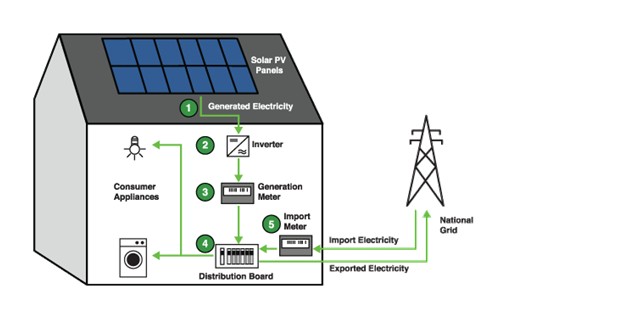
First Step.
Solar panels on your roof convert sunlight directly into DC electricity. Panels work best in bright sunlight, but still produce electricity on cloudy days.
Second Step.
The generated electricity is converted to a standard AC supply, using an inverter. The inverter can be in your loft space or in a convenient place near to the consumer unit, such as a garage.
Third Step.
A generation meter measures all of the electricity that is produced. Under the Feed In Tariff scheme, you are paid for every unit, whether you use it or not.
Fourth Step.
The solar electricity is either used by your household appliances, or if not required it is exported to the National Grid.
Fifth Step.
Any solar electricity used in the house is FREE and reduces the amount that you have to buy from your electricity supplier. So the readings on your existing import meter will be lower, giving additional savings.
Unless your system is over 30kW, a meter is not normally fitted to measure how much electricity goes out to the grid. Instead suppliers just assume that half of the electricity that is generated is being exported to the grid, so pay the export tariff for half of what you generate. If you have a new Smart meter, then this will accurately measure how much you are exporting to the grid.









